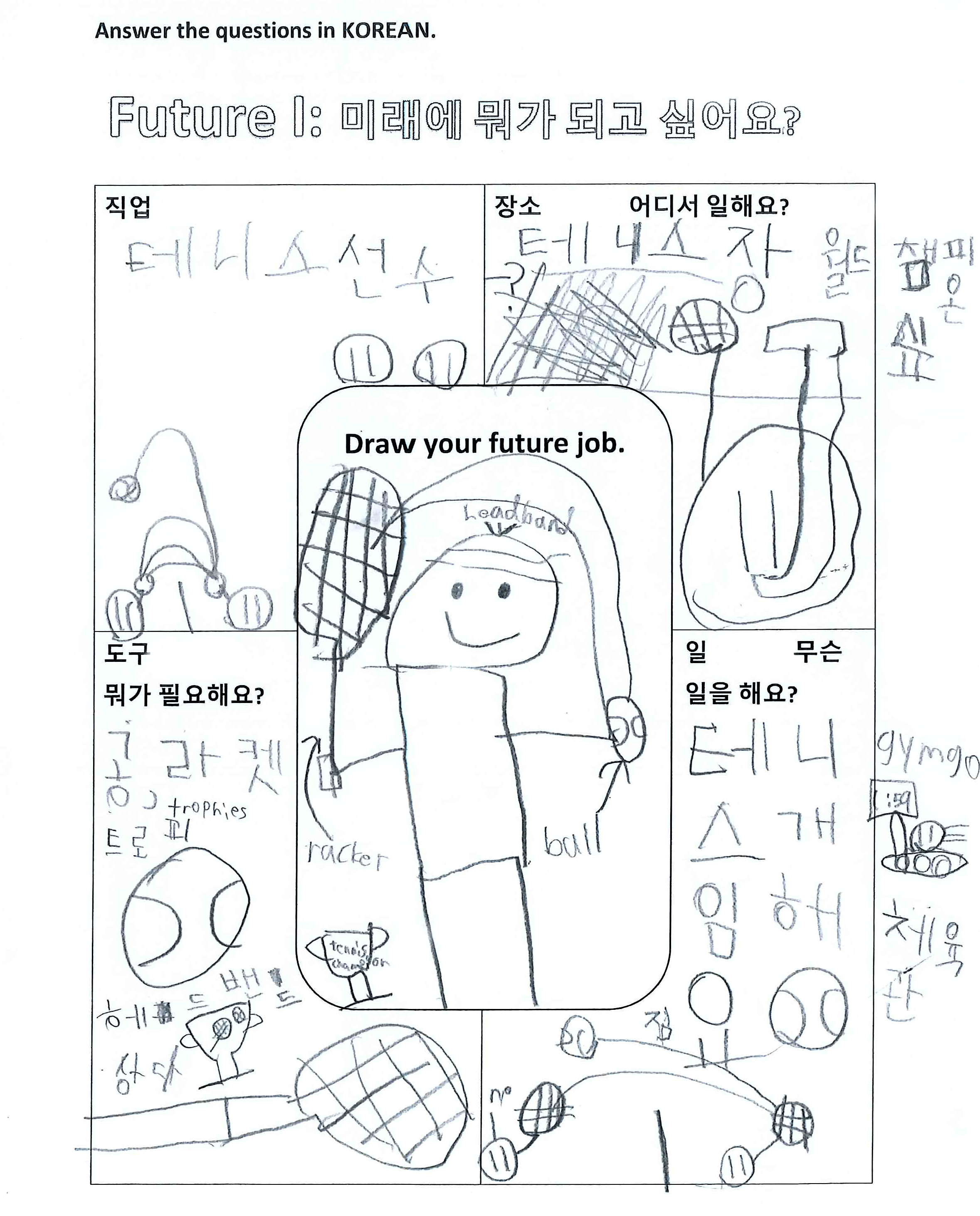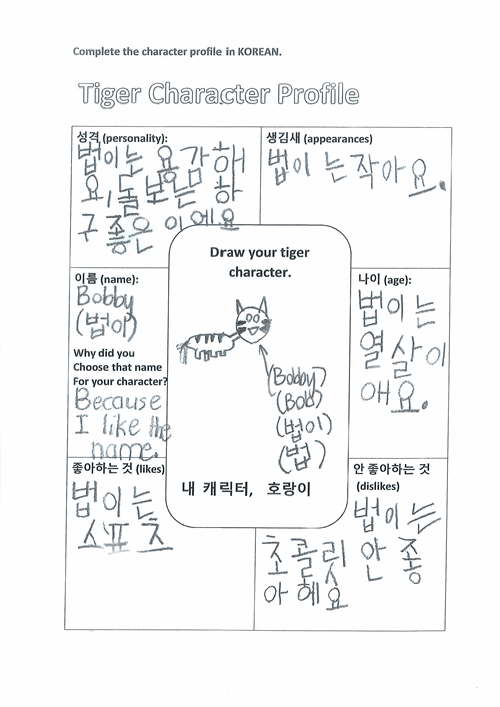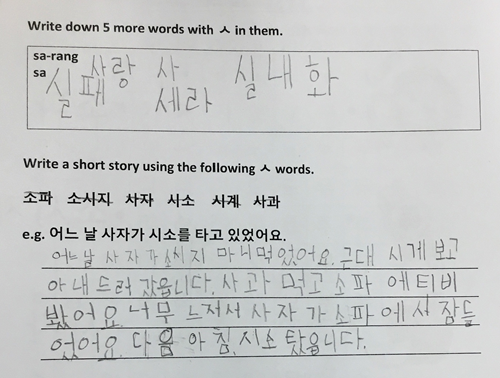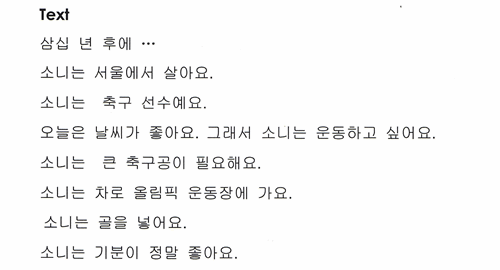By the end of Year 4, students use Korean to interact in classroom routines, action-related talk and play with teachers and peers. They exchange personal information relating to aspects such as age or interests, using simple questions and short statements as set phrases (for example, 몇 살이에요? 아홉 살이에요; ...이/가 좋아요? 네, 좋아요). They use formulaic language to express rapport with others (for example, 아, 그래요? 나도 좋아요). Students respond to instructions for familiar classroom routines and activities taking required actions (for example, 해 보세요, 들으세요, 읽으세요) and to simple questions (for example, 이게 뭐예요? 누구예요? 몇이에요? 오늘 뭐 해요?) with set phrases ending in –이에요/예요 or -어/아요 (for example, 책상이에요; 벤이에요; 구예요; 학교에 가요). They ask for repetition (for example, 다시 해 주세요) and for a turn to ask a question (for example, 질문 있어요) and negotiate requests using simple language (for example, … 있어요?; 네, 있어요/아니요, 없어요; 빌려 주세요; 여기 있어요). Students identify key words or topics from simple oral, visual and written texts, using cues such as context, graphics, familiar vocabulary and language features to support understanding. They present simple information in texts in different formats and create and perform their own texts with the support of modelled language and other resources. Students approximate the sounds, rhythms and intonations of spoken Korean and write familiar words in Hangeul with some accuracy. They create simple sentences in their speech and writing, using basic case markers (such as –은/는, –이/가, –을/를, –에) and a particle –도 as an inseparable part of a formulaic structure: a noun/pronoun+ a case marker/particle (for example, 저는 …, 집에 …, 나도 …). They use common action verbs and descriptive verbs (such as 가다, 일어나다, 듣다, 좋다) as part of formulaic expressions ending in –어/아요 or its honorific form –(으)세요, varying intonation contours for statements, questions (with or without a question word), requests or commands. They ask simple questions about people, objects or numbers, using question words such as 누구/누가, 무엇/뭐 and 몇. They use contractions of demonstrative pronouns and –이 (for example, 이게, 저게 and 그게), as formulaic chunks, and vocabulary related to school (such as 학교, 책, 지우개), home (such as 집, 엄마, 아빠) and sports and leisure activities (such as 방학, 수영, 크리켓). They use vocabulary for major colours (such as 빨간색, 파란색, …) and number expressions, choosing between native Korean and Sino-Korean number systems up to 10 as appropriate, using counters to describe ages (for example, 아홉 살), school years (for example, 사 학년) and numbers of objects (for example, 한 개), animals (for example, 두 마리) or people (for example, 세 명). Students match known Korean words or expressions with their English equivalents and create simple bilingual texts of familiar objects with support. They understand that meaning may change through translation across languages and exemplify words that could be translated differently according to context (such as 집: house/home; … 있어요: I have …/there is (are) …). They identify different social networks they belong to such as clubs or language-speaking communities and compare their past and current intercultural capability with reference to the experience of learning Korean.
Students discriminate between meaningful sounds in Korean which are not distinguished in English or other languages such as /ㄱ/ versus /ㅋ/ versus /ㄲ/ or /ㅐ/ versus /ㅔ/, and associate the pronunciation of simple words with their script. Students differentiate statements from questions according to intonation. They identify simple consonant and vowel letters in Hangeul and combine them to construct a syllable block. They create short texts using syllable blocks combined together to form a word. They apply their understanding of Korean and English having different grammatical systems by using appropriate word order (subject-object-verb) and case–marked formulaic chunks (for example, 저는, 사과를) in simple Korean sentences. They identify differences between Korean and English in some aspects of language use such as naming conventions or ways of addressing people. They apply their understanding of the importance of politeness in using Korean and select the appropriate form of language to acknowledge age and social relationships when greeting (for example, 안녕?versus 안녕하세요?; 안녕히 가세요/안녕히 계세요 versus 잘 가/잘 있어). They identify aspects of language use in both Korean and English that people from other cultures might or might not regard as appropriate, such as ways of greeting or (not) making eye contact during interactions.




